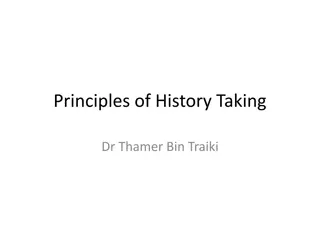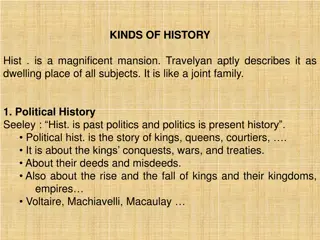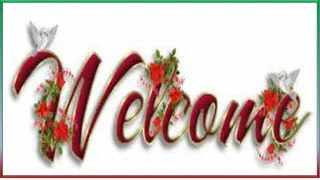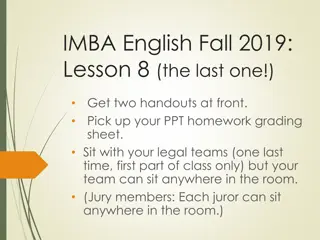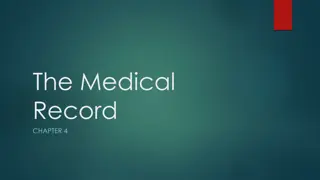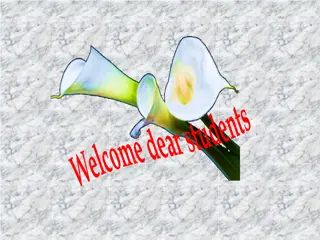
Effective Note-Taking Strategies for Studying Success
Learn how to take organized notes using the Cornell Notes system. This method helps you to structure your notes effectively, summarize main ideas, and ace your exams. Improve your study habits with proven techniques and boost your academic performance.
Download Presentation

Please find below an Image/Link to download the presentation.
The content on the website is provided AS IS for your information and personal use only. It may not be sold, licensed, or shared on other websites without obtaining consent from the author. If you encounter any issues during the download, it is possible that the publisher has removed the file from their server.
You are allowed to download the files provided on this website for personal or commercial use, subject to the condition that they are used lawfully. All files are the property of their respective owners.
The content on the website is provided AS IS for your information and personal use only. It may not be sold, licensed, or shared on other websites without obtaining consent from the author.
E N D
Presentation Transcript
War in the Pacific Pearl Harbor Philippines General Douglas MacArthur Surrender Bataan Death March Chester Nimitz Battle of Midway Fall back Kamikaze Harry Truman
How to take Notes And actually be able to study from them!
Strategy No. 1 Cornell Notes What it is a way to take more organized notes What you will need lined notebook paper (and something to write with of course!)
Cornell notes: How it works Put the subject and date at the top of your paper (and each page thereafter), then Divide your paper into three sections, like this:
Cornell notes: How it works Taking notes The large box to the right is for writing notes, either from the lecture or as you read. Skip a line between main ideas and topics. Don't use complete sentences, and don t try to copy down every word from the text or the lecture. Use abbreviations, whenever possible. Develop a shorthand of your own, such as using "&" for the word "and , w/ for with, b/c for because, and so on.
Cornell Notes: Using your notes to study Course name, source (lecture, text), date Review notes as soon as possible after class! Pull out main ideas and put them in the left column Yada, yada, yada, YADA Yada YADA Yada, yada YADA, yada, yada, yada YADA YAD A YAD A YADA YADA -
Cornell Notes: Using your notes to study Course name, source (lecture, text), date Yada, yada, yada, YADA Yada YADA Yada, yada YADA, yada, yada, yada YADA YAD A YAD A Write a summary of the main ideas in the bottom section YADA YADA - Yada yada yada yada yada yada yada yada yada
Now that youre ready, study! Reread your notes in the right column Spend most of your time studying your notes in the leftcolumn and on your summaries at the bottom of the page These are the things you will most likely be tested on. Results? A+!!
Sources: The Learning Toolbox, James Madison University, The Americans, McDougal Little, 2006, Danzer et. al.
Japanese-American Internment Saboteurs Japanese Americans Anti-Japanese Paranoia President Roosevelt Concentration Camps Nisei Grievances Executive Order 9066 Fred Korematsu Korematsu vs United States
How to Analyze Primary Sources Using Historical Thinking Skills
Historical Context Intended Audience Purpose Point of View Outside Information
Historical Context Historical context is the political, social, cultural, and economic setting for a particular idea or event. Historical context also refers to the moods, attitudes, and conditions that existed in a certain time. Questions What was going on during this time? Where was this happening? When was this happening?
Intended Audience The intended audience is the person or people the author created the document for. Questions Who will see the document? Where was it published? When was it published
Who is the Intended Audience? Have you ever lain awake on Christmas Eve with everything about you strange, quiet and still as death? As Christmas drew nearer, we older children knew that this year there wouldn t be gifts and much fun for the little children, for out here in a concentration camp we thought no one would think of us. So we tried extra hard to make Christmas as happy as possible for the tots. Christmas was ushered in with cold, howling winds . Refusing to be discouraged, we panned for a party for which everyone gladly donated some money. We decorated the Mess Hall with red and green crepe papers and wreaths made of desert holly . As if with the waving of a magic wand the bare cold mess hall was changed into an enchanting place. Emiko Kamiya, who was interned at the Poston Relocation Center, quoted in Werner, Through the Eyes of Innocents, p. 94
Purpose The purpose is the authors reason for creating the document. Questions Why did the author create the document. Is the author trying to provoke feelings in the reader?
Point of View The author s point of view reveals the author s beliefs, personal judgments or attitudes toward a certain subject. Questions What is the authors attitude toward the event? What is the authors bias? (prejudice in favor of or against) What is the authors background?
What is the Authors Point of View Colonel Bendetsen showed himself to be a little Hitler. I mentioned that we had an orphanage with children of Japanese ancestry, and that some of these children were half Japanese, others one fourth or less. I asked which children should we send . Bendetsen said: I am determined that if they have one drop of Japanese blood in them, they must go to camp. Father Hugh T. Lavey of the Catholic Maryknoll Center, quoted in Werner, Through the Eyes of Innocents, p. 85
O Outside information What specific outside information have you learned that can be connected with that in the document? Questions: How does document connect with other events during the time period? How will use the document to support outside information in your argument/essay?
Sources http://www.answers.com/ http://homeworktips.about.com Google Images









